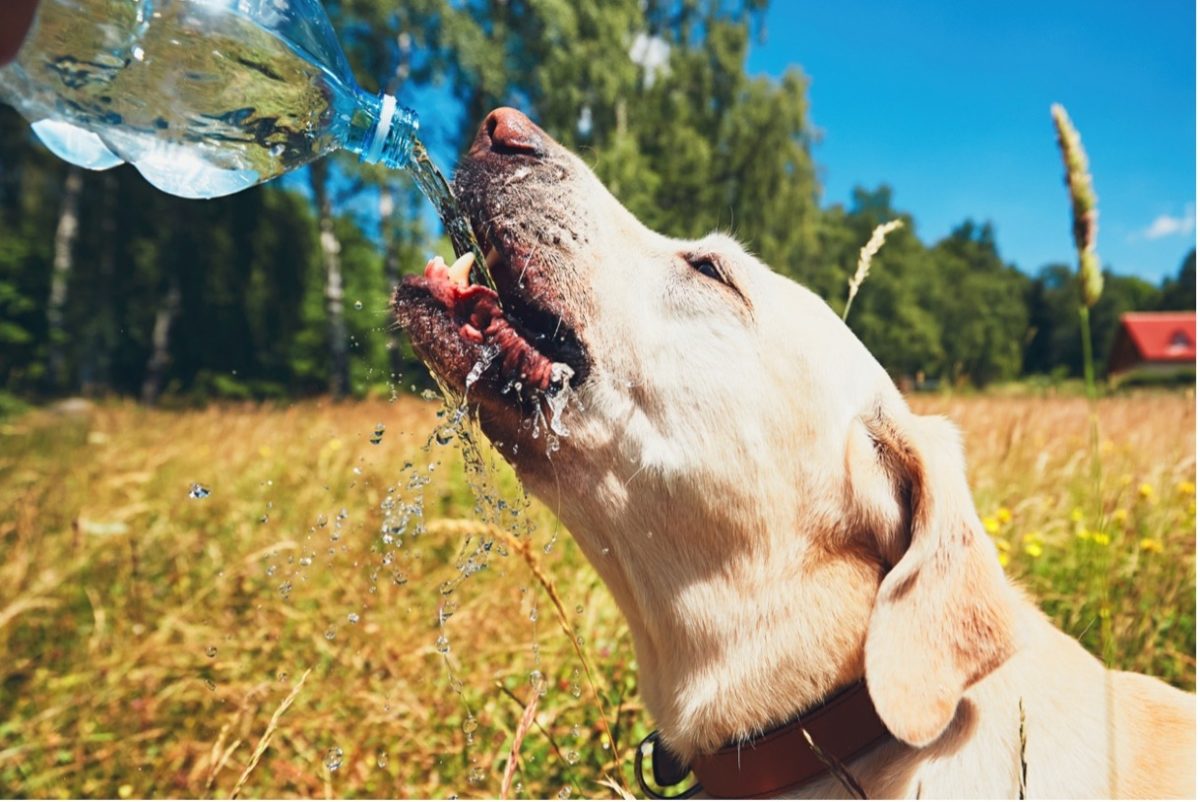California summer has arrived! Families are firing up their grills, spending the day at Six Flags, or perhaps heading to the beach. There are tons of activities to keep you and the family busy this time of year. But this time of year, we are also reminded of the dangers of hot weather for our pets. Temperatures in Santa Clarita range between 80-90, but we have seen some highs of 110. For this reason, we want to share with you hot weather safety tips for your pets so you can safeguard them from the dangers of overheating.
Dangers of Hot Weather and Overheating
The first thing to understand is how easily a pet can get overheated in hot weather. A pet can get overheated in the home, during a hike, or even on a short car trip. Here are symptoms of overheating to watch for:
- Excessive panting
- Excessive drooling
- Erratic pulse
- White or pale gums that seem dry.
- Vomiting or diarrhea
- Confusion, low energy, or sudden lack of coordination
- Rectal temperature of more than 103°F
If you see any of these symptoms, do not hesitate! The sooner you act, then the faster you can bring your pet’s temperature down. Quickly find access to cool water and wet your pet down. Provide them with plenty of fresh, clean, cool water to drink, and call your vet to see if you should bring them in. You can always contact us for guidance on what you should do.
Overheating Prevention Tips
The easiest way to handle overheating is to stop it from happening in the first place. Here are some helpful tips to keep in mind.
- Never leave your pet in the car, even if you think it’s going to be just for a little while; this can be fatal! Per the Humane Society, a car can get up to 120 degrees in just 30 minutes when it is only 85 degrees outside!
- Keep your pet hydrated by always having plenty of clean, fresh water to drink. If you take your pet on a hike or road trip, ensure to have enough water and a water bowl for your pet.
- If your pet is outside, make sure they have protection from heat and sun with plenty of shade and cold water. Tree shade and tarps are ideal because they don’t obstruct airflow. Note: A doghouse does not provide relief from the heat; it makes it worse.
- Keep off the hot pavement as much as possible. Hot pavement can cause overheating and not to mention burned paws!
- Do not get your pet shaved. Pets’ coats have several layers that are essential to their comfort in the heat. When you shave their coats, they cannot cool down naturally, which can cause discomfort, overheating, and other dangers like sunburn or skin cancer. However, grooming your pet is okay.
Exotic Pets
Exotic pets are typically more delicate than dogs or cats. Ferrets, rats, guinea pigs, rabbits, and chinchillas are prone to overheating. You can let them have some outdoor sun when it is cooler in the mornings or evenings, but they should be kept indoors on hot afternoons. Ideal temperatures for rabbits range between 55-70 degrees F. They can tolerate up to 85 degrees for short periods. But they can suffer from heatstroke in temperatures above 85. For example, one family left their home in the summer for several hours for an outing but left the air conditioning off. When they returned, their rabbit was suffering from heatstroke, which fortunately they recognized immediately and saved her.
Summary
During the hot weather keep in mind that pets can be more sensitive to hot weather than we are. They cannot tell you when they are getting too hot and overheating. So, it is up to you to take preventative measures to keep them safe from hot weather and know the signs of overheating so you can act quickly.
Sincerely,
Jaimie Ronchetto, DVM

